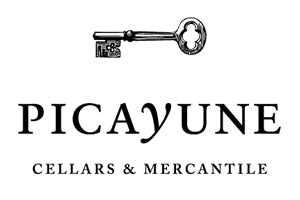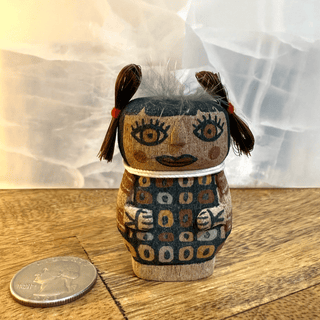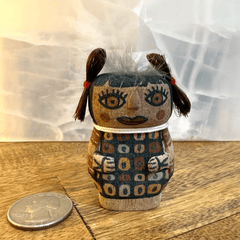Hand carved of the root of the cottonwood tree by Kevin Quanimptewa of the Tobacco clan from the village of Hotvela on Third Mesa.
The root of the cottonwood tree is used as it grows only where there is an ample and consistent supply of water - rare around the Hopi mesas - and because of the water-seeking nature of the roots, which can grow out and down a couple hundred feet or more in search of the water table.
This particular carving represents Hopi Mana - Hopi Maiden as she might appear during certain Kachina ceremonies. Her hair done up in a butterfly maiden style indicates her status as an unmarried woman. During the ceremony one or more Hopi woman elders will sprinkle corn meal on the the dancers to carry prayers back to the spirit world
Approximately 2 inches tall and 1-1/4 inches wide.
Hand carved of the root of the cottonwood tree by Kevin Quanimptewa of the Tobacco clan from the village of Hotvela on Third Mesa.
The root of the cottonwood tree is used as it grows only where there is an ample and consistent supply of water - rare around the Hopi mesas - and because of the water-seeking nature of the roots, which can grow out and down a couple hundred feet or more in search of the water table.
This particular carving represents Hopi Mana - Hopi Maiden as she might appear during certain Kachina ceremonies. Her hair done up in a butterfly maiden style indicates her status as an unmarried woman. During the ceremony one or more Hopi woman elders will sprinkle corn meal on the the dancers to carry prayers back to the spirit world
Approximately 2 inches tall and 1-1/4 inches wide.




